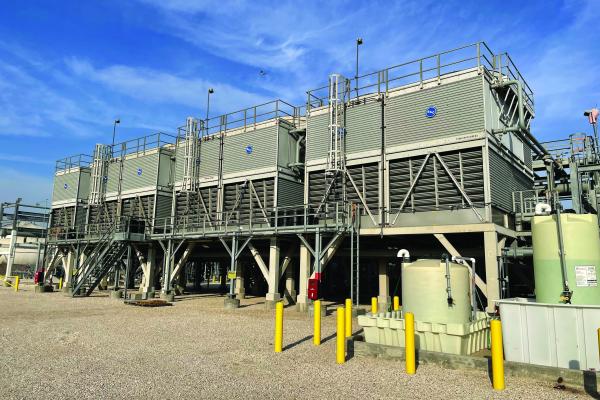Water Savings
Water conservation is a high priority in designing and operating water-cooled equipment and plays an important role in USGBC’s Leadership in Energy and Environmental Design (LEED) certification and other sustainability programs. LEED assigns credit points to reduce water usage.
Chiller & Cooling Best Practices Magazine spoke with Tom Pagliuco, Executive Director Global Energy Engineering at AbbVie, Inc. about best practices for optimizing chilled water systems in today’s pharmaceutical operations.
[ Read Full Story ]
For U.S. Flue-Cured Tobacco Growers, Inc. (USFCTG) sustainability is a guiding practice for tobacco production from seed to delivery. So when traditional chemical water treatment had proven problematic in air washers at its plant in Timberlake, North Carolina, the company thought outside the box for solutions to address a variety of issues while also supporting its sustainability goals.
[ Read Full Story ]
Field-erected evaporative “wet” cooling towers, combined with heat exchangers, are an economical and efficient method to dissipate large heat loads at oil and gas refineries and chemical processing plants – as long as they’re free of harmful debris. Yet many cooling towers at these facilities are highly susceptible to poor performance and costly downtime due to problems associated with debris buildup and potential for debris to pass by traditional stationary water screens during the cleaning process, clogging heat exchangers.
[ Read Full Story ]
Do water-cooled chiller plants still deliver lower utility bills? Today, many chiller plant energy analyses carefully account for energy costs, and even energy escalation rates – a factor that projects how fuel costs will increase over time, while ignoring water and wastewater costs associated with cooling towers. While highly effective at transferring heat, cooling towers consume millions of gallons of water each year through the process of evaporation, drift, and blowdown. With the rising cost of water and wastewater, this omission can result in an incomplete picture for the building owner.
[ Read Full Story ]
Chiller & Cooling Best Practices Magazine interviewed Peter Armbruster (Director of Sales and Marketing) and Bob Smith (Director of Product Management) at Thermal Care to gain insights into best practices used to accurately evaluate and assess a plant’s cooling needs and ultimately provide the solution best matched to the application.
[ Read Full Story ]
This article examines challenges with phosphorous-based programs, key factors to controlling cooling water chemistry and the advantages of phosphorous- and zinc-free cooling water treatment technology.
[ Read Full Story ]
Chillers are an essential component in many building Heating, Ventilation and Air Conditioning (HVAC) systems. They provide cooling to the building by working in tandem with pumps and cooling towers in a water-cooled chiller plant. Because of the chiller’s complexity and its role in cooling facilities, it is arguably the most important piece of equipment to maintain.
[ Read Full Story ]
Among key initiatives at DENSO’s Maryville, Tennessee, facility is the use of an innovative ice-storage system engineered to provide environmentally friendly comfort cooling to employees at the company’s main production facility. The system also allows Plant 101 to reduce cooling costs per ton by 44%, while providing a payback of less than four years. It also resulted in an annual carbon dioxide (CO2) reduction of 18,000 tons.
[ Read Full Story ]
While most rely on chemicals for water treatment, others are finding success in what can be accurately and fairly described as a green solution because it takes the form of a moss. More precisely, this plant-based alternative to chemical water treatment leverages the properties of sphagnum moss, and it’s being harvested, processed and sold as ProMoss™ to companies throughout North America by Creative Water Solutions (CWS), Plymouth, Minnesota.
[ Read Full Story ]
For decades, evaporative cooling has been the principal means to regulate the temperature of buildings. And with more than 50% of total building water usage dedicated to heat transfer, there are major opportunities for water savings.
[ Read Full Story ]

